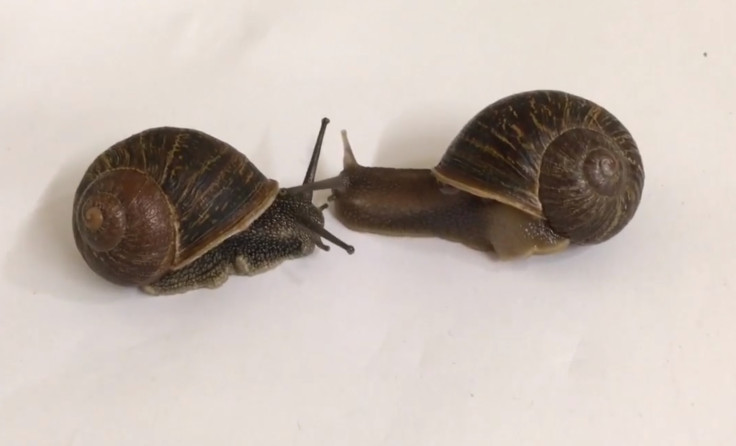Lefty snail Jeremy is looking for love and he needs your help
Nottingham University is hoping to study the one-in-a-million snail but it has no mate to produce lefty babies with.
An extremely rare "lefty" snail is in desperate need of a mate, so scientists have asked the public for help. The garden snail is special because its shell spiral goes anti-clockwise – making it a one-in-a-million specimen.
Researchers at Nottingham University are hoping to study the genetics of the lefty snail, but to do so they will need more of its kind. And to make lefty snail babies, they will need for the snail – dubbed Jeremy – to mate.
The problem is that as well as having a lefty shell, Jeremy also has lefty genitals – on the opposite side to his righty counterparts.
Angus Davison, from the University's School of Life Sciences, said: "Snails are hermaphrodites meaning that if they want to they can reproduce on their own without the need for another mate. However, they don't really like doing this and from our perspective, the genetic data from offspring of two lefty snails would be far richer and more valuable to us."
Jeremy was discovered around a compost heap in south-west London by a retired scientist from the Natural History Museum. He was then sent to Nottingham to be studied by snail expert Davison.
"This really is an exciting find – I have been studying snails for more than 20 years and I have never seen one of these before," he said. Earlier this year, Davison and colleagues discovered the direction of a snail's shell twist depends on a specific gene.

The same gene also plays a role in the symmetry of other animals – including humans – so understanding it could shed light on how and why our organs are the way they are, and why their development can go wrong. "We are very keen to study the snail's genetics to find out whether this is a result of a developmental glitch or whether this is a genuine inherited genetic trait."
Davison is asking people to be on the look out for lefty snails. "This is something which everyone can get involved with and which you can easily do on your own doorstep. It is an example of citizen science at its best. There is a chance, because it is such a rare thing, that anyone who can find and identify another of these sinistral snails may even find themselves named as a contributor on a research paper we publish in the future as a result of this."
Anyone who finds a mate for Jeremy is asked to send pictures of it to angus.davison@nottingham.ac.uk or tweet it with the hashtag #snaillove.
© Copyright IBTimes 2025. All rights reserved.






















